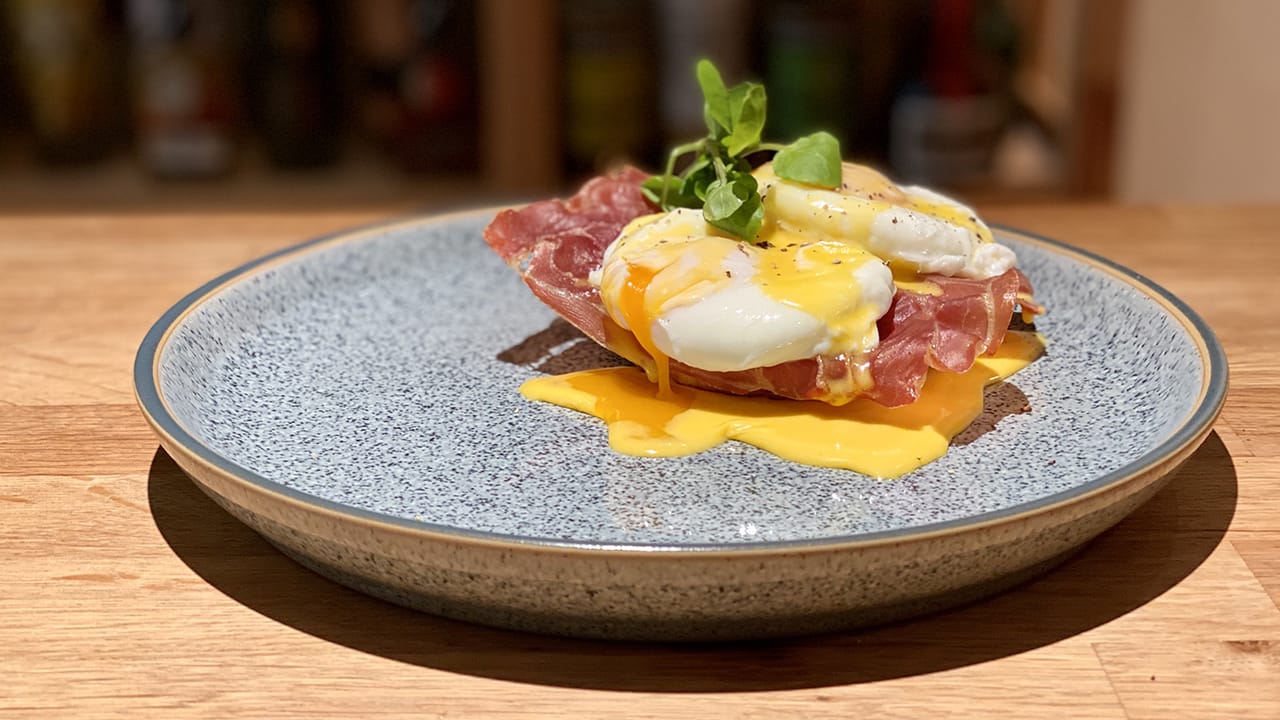Parma Ham Eggs Benedict
Eggs Benedict has always been a breakfast favourite of mine, but I’ve only recently begun making it at home. Some neat tricks and little hacks turn a series of very simple ingredients into a delicious, decadent brunch—it’ll come together quicker than you think.
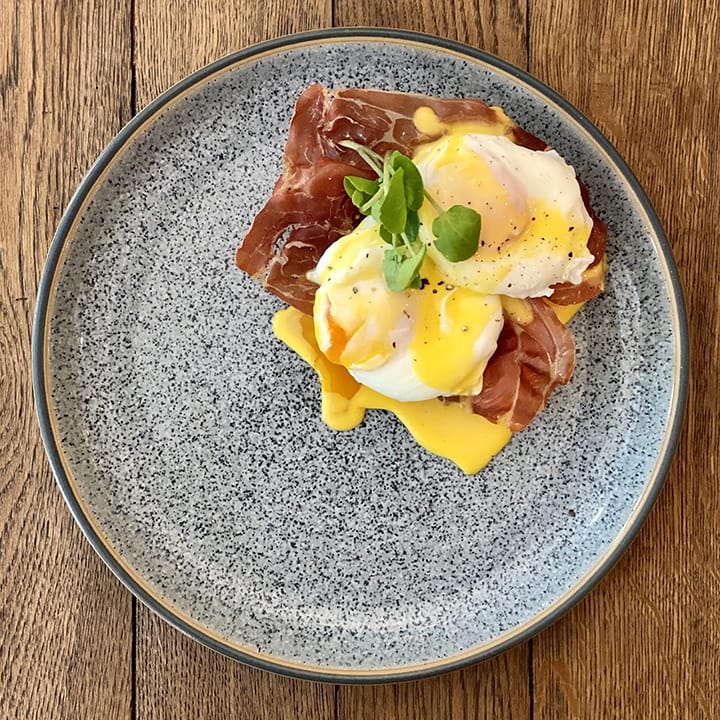
Traditionally, Eggs Benedict would be served with bacon and on an English muffin, but I find that the salty, umami, rich flavour of Parma ham and the buttery, sweet flavour of brioche contrasts incredibly with the tang of the Hollandaise and the richness of the egg yolk.
Fun fact: The pigs bred for Parma ham are fed on the leftover whey from the region’s other famous export, parmigiano reggiano. This is why you can detect a distinct and almost cheesy funk in the meat.
You Will Need
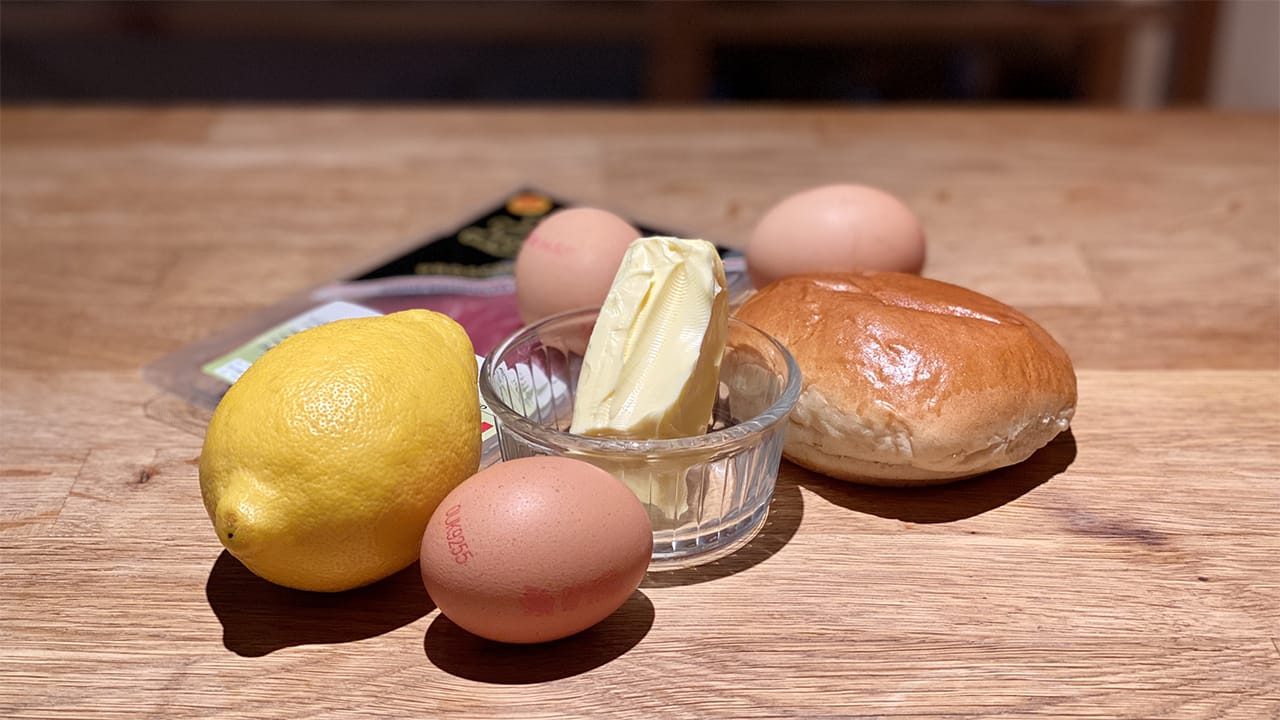
- 1× brioche bun
- 2× slices of Parma Ham
- 3× very fresh eggs
- 75g butter
- Lemon juice
Hollandaise Sauce
If you’ve ever tried to make Hollandaise sauce, I’m sure you’ve run into trouble and frustration at least once before. Bains-marie, whisks, delicate balancing acts with heat, and it soon becomes very easy to get wrong. Way too stressful when you’re trying to make breakfast. Sacrilegious as it may be, I use a far simpler method that yields the same outcomes. Work smart, not hard.
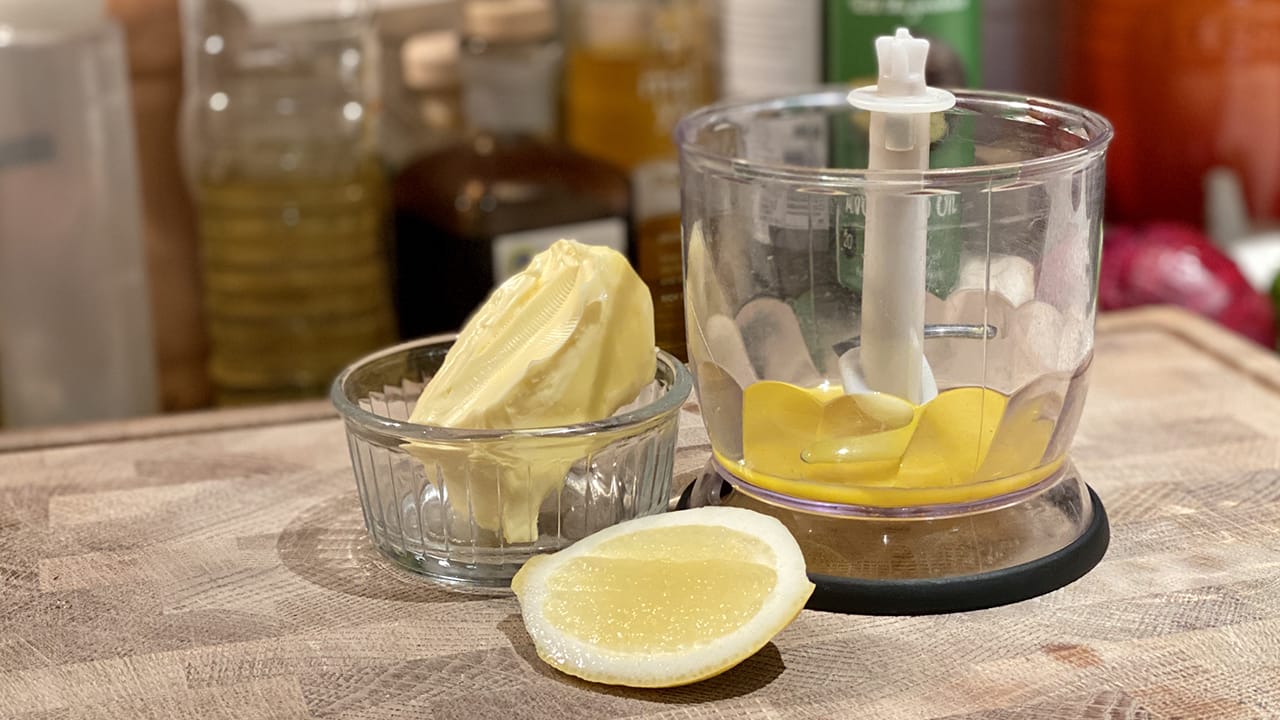
Gently melt the butter in a milk pan. Ensure that it is fully melted and hot, but make sure it doesn’t burn. Avoid stirring or otherwise agitating the butter, as we want to try and separate the white solids that will sink from the fat that will float—it’s this clear fat that we need, so skim off any floating solids.
Meanwhile, add the yolk of one egg to a small food processor or blender. Season lightly and once the butter is ready, gently pour a splash at a time into the blender and briskly blitz. It’s vital that you don’t flood the yolk, so add the butter gradually. The heat of the butter will cook the mixture, but ensure it’s not boiling. Keep adding, blitzing, adding, blitzing until you’ve reached the desired consistency. Don’t be alarmed if you have butter left over—it’s better that way than not having enough.
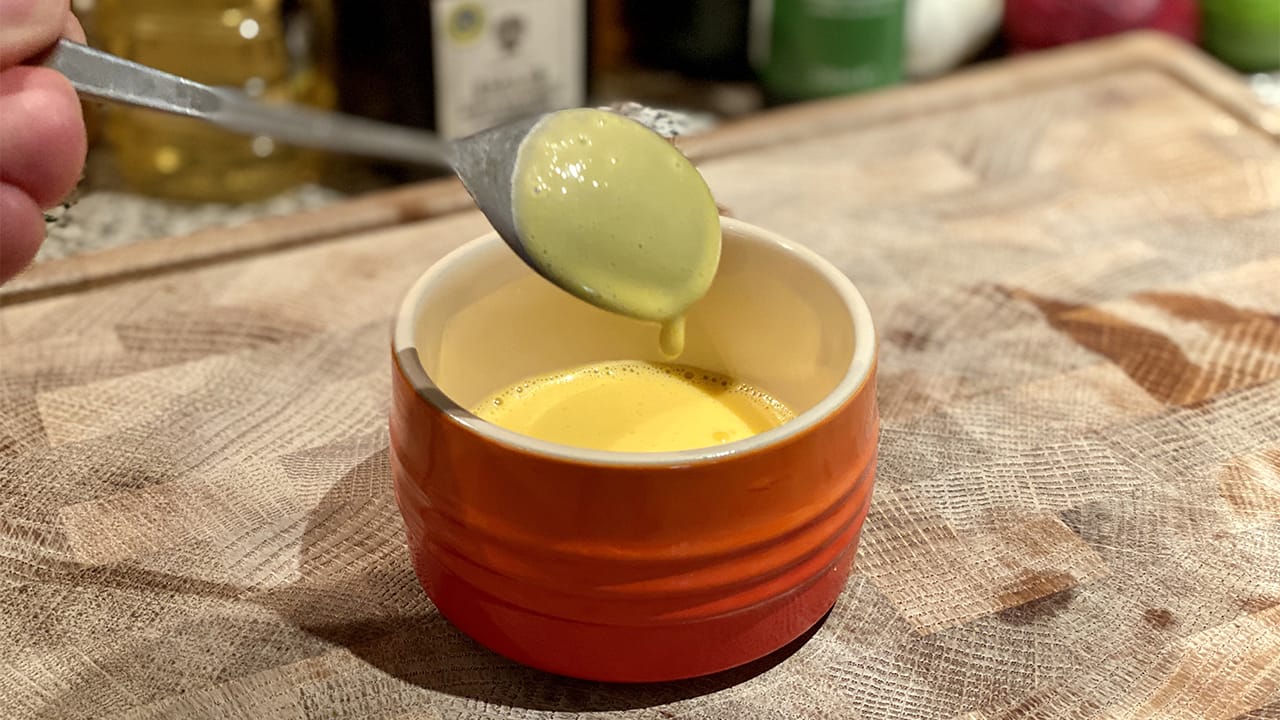
Once you’re happy with the thickness of the sauce, add a squeeze of lemon juice. Taste and adjust as necessary. Transfer to a preheated (but not hot) serving jug or ramekin until needed in a few minutes.
Parma Ham
Preheat an oven to 180ºC. Lay two slices of Parma ham on a cold baking sheet. Place the tray in the oven just before you add your eggs to the pan in the next step. That’s all there is to it.
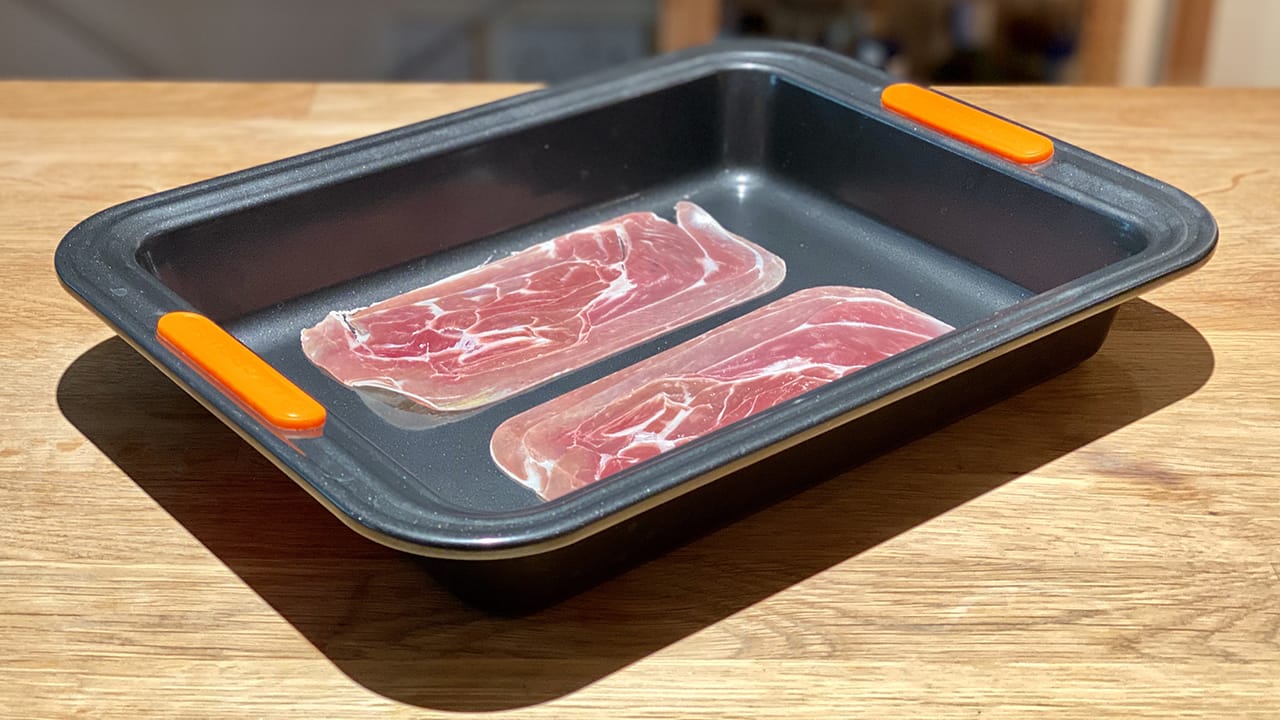
Poached Eggs
The thing about Eggs Benedict is that it combines two reasonably complex and error-prone techniques. Making Hollandaise and poaching eggs are both things that can, and very often do, go wrong. Miraculously, I’ve managed to nail a technique for poached eggs that has close to 100% accuracy.
The most important thing is your eggs. They need to be high-quality and very fresh. Grade A eggs have thicker whites which better support the yolk, and as eggs age, the whites will thin. Ergo, fresh, grade A eggs will have whites much better suited to poaching.
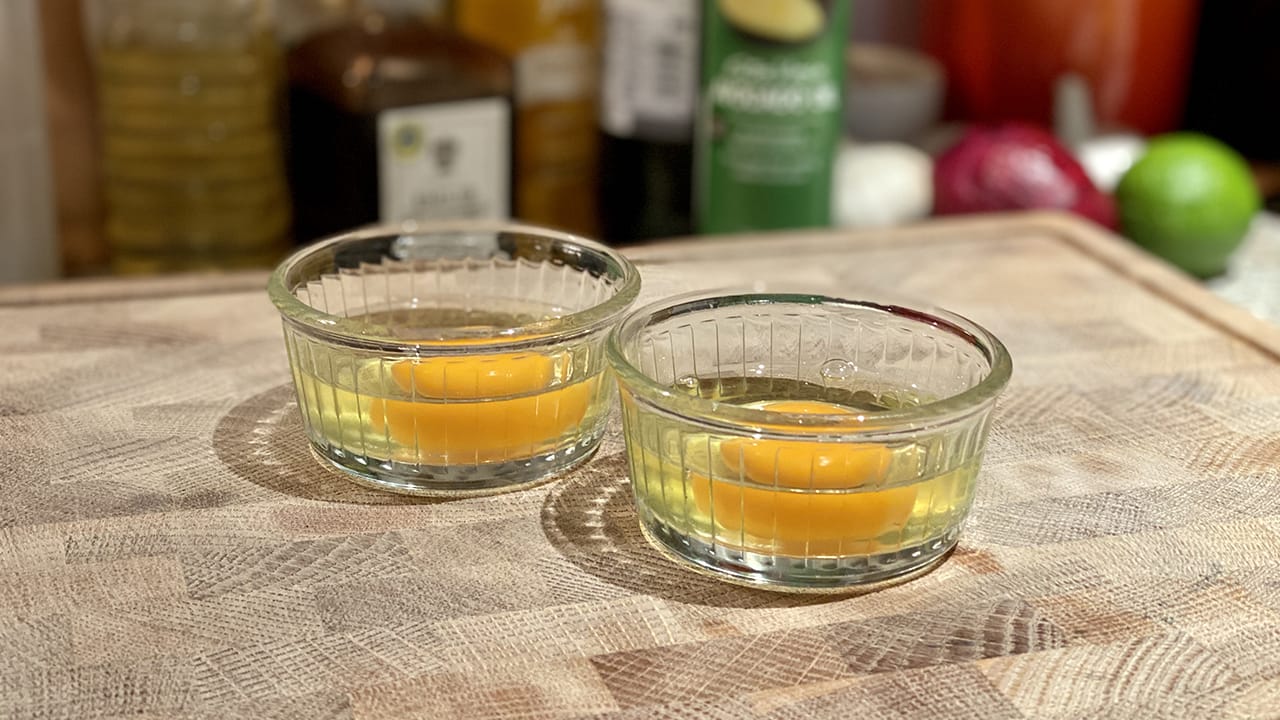
Fill a wide pan about 5–7cm deep with water and slowly bring to a simmer. It’s imperative that you don’t place eggs into boiling water as two things will happen:
- The eggs will overcook. 100ºC is far too hot for eggs.
- The whites will tear apart. The turbulence caused by boiling is likely to ruin the eggs.
When the water is beginning to simmer, bubbles appear on the bottom of the pan. Put your Parma ham in the oven now and prepare to poach!
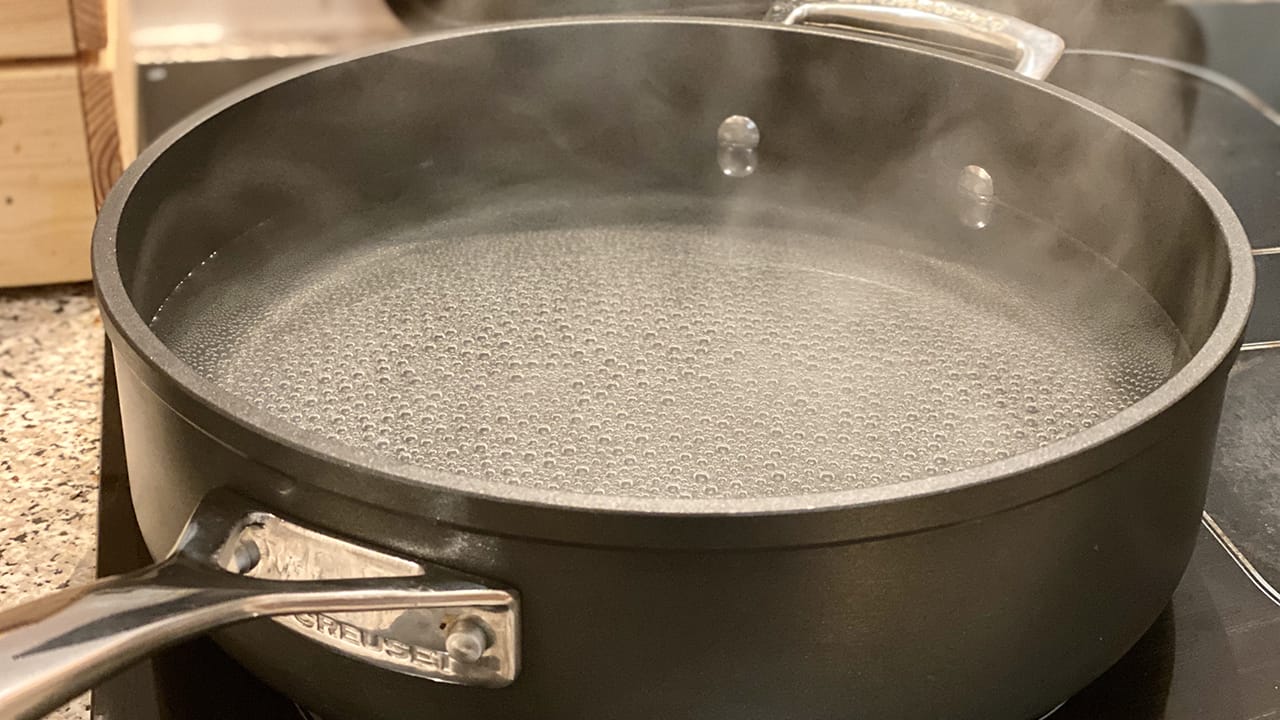
If your eggs are fresh enough, you won’t need to use any of the vinegar or whirlpool hacks you may have read about. Simply lower the ramekin into the water—actually into the water—and once the water level reaches the lip of the bowl, smoothly but swiftly tip out the egg into the water. It should be a smooth, seamless motion.
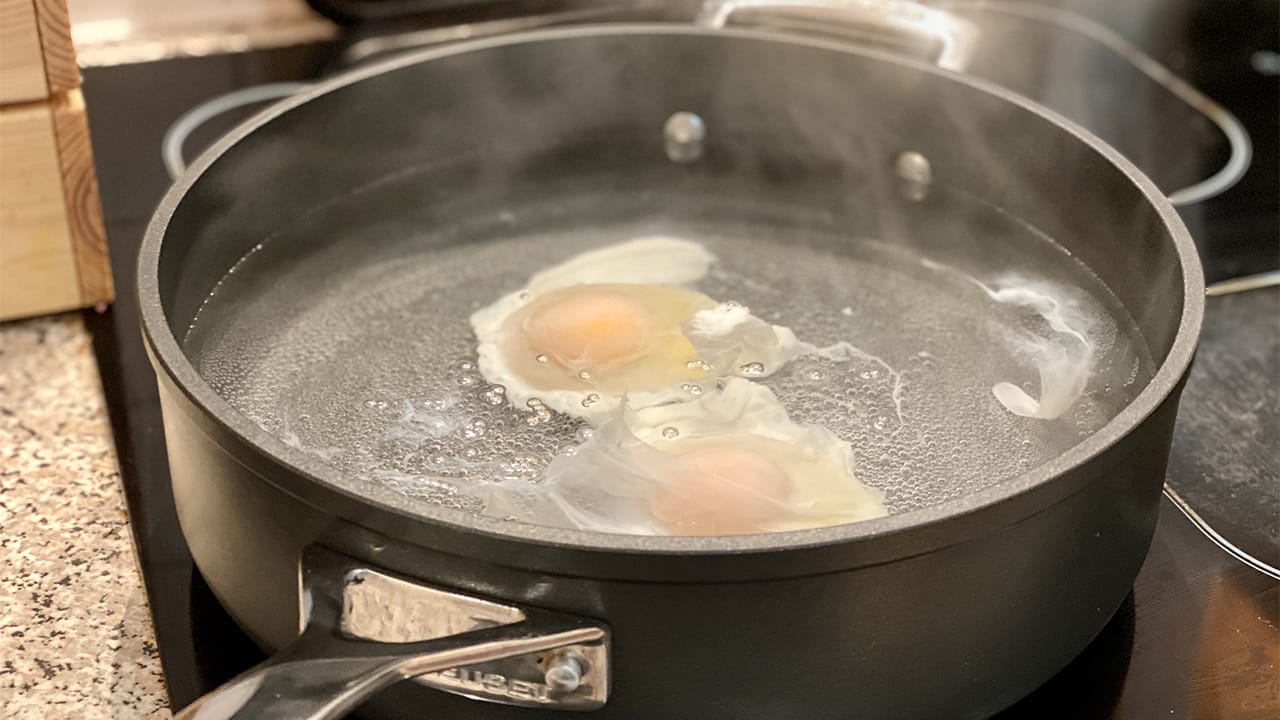
As they’re cooking, begin lightly toasting your brioche.
You shouldn’t need a timer as it’s quite easy to see the progress, but for reference you’re aiming at about 3–4 minutes. Once the eggs are done, fish them out with a slotted spoon and rest on a paper towel while you trim any wispy, unsightly bits of egg white.
That’s it! Everything is done. Stack your brioche, Parma ham, poached eggs, and then drizzle with Hollandaise. Serve with coarsely ground black pepper and watercress (which nobody ever eats, but this is a dish that can really use the greenery).
